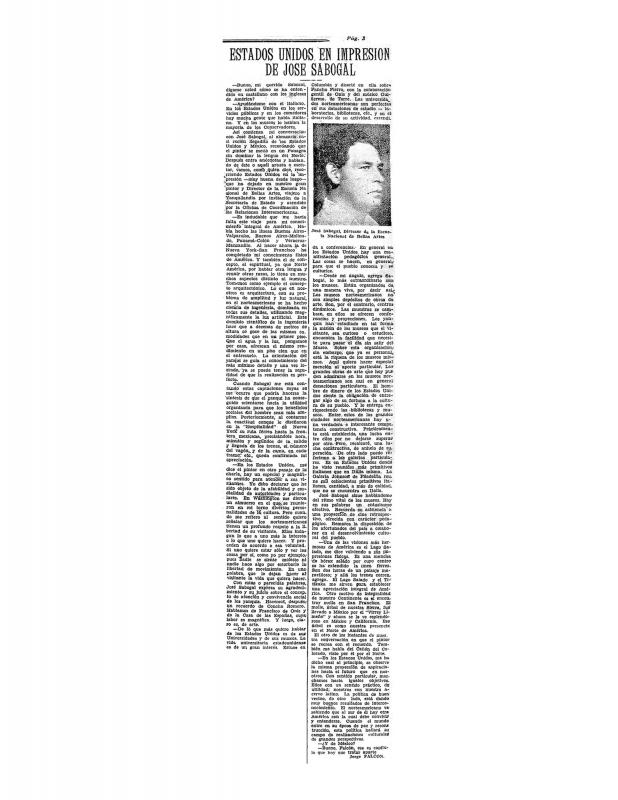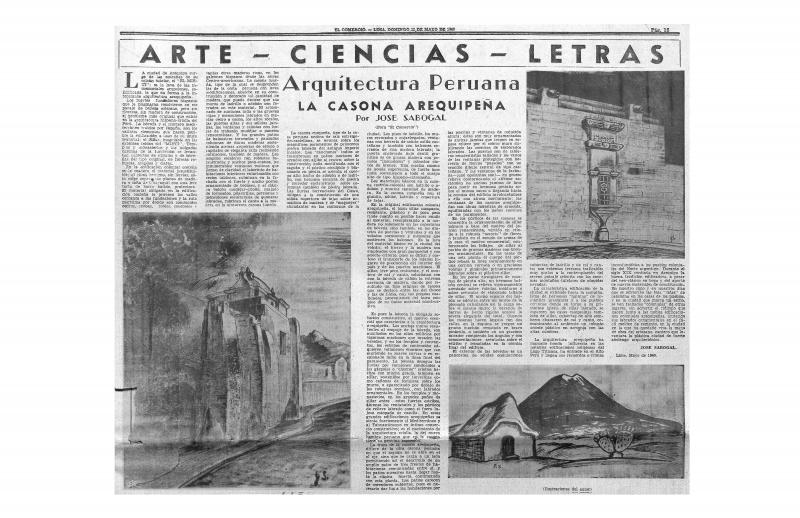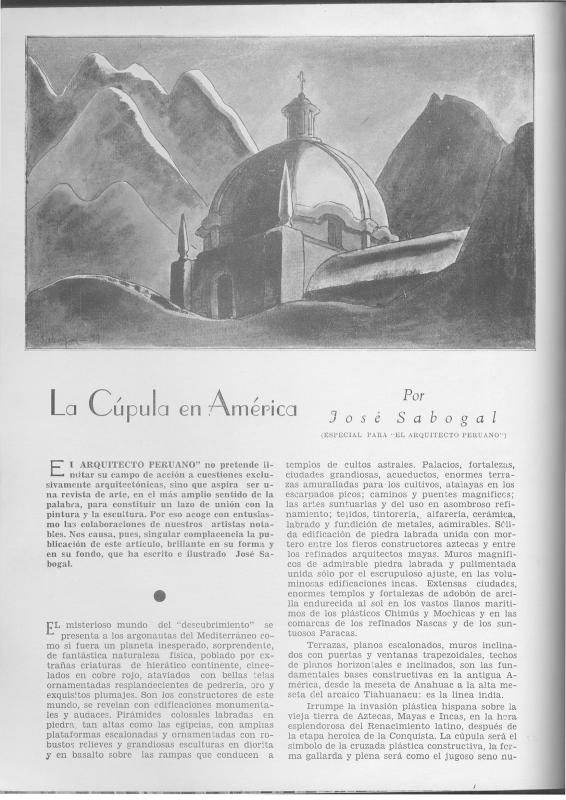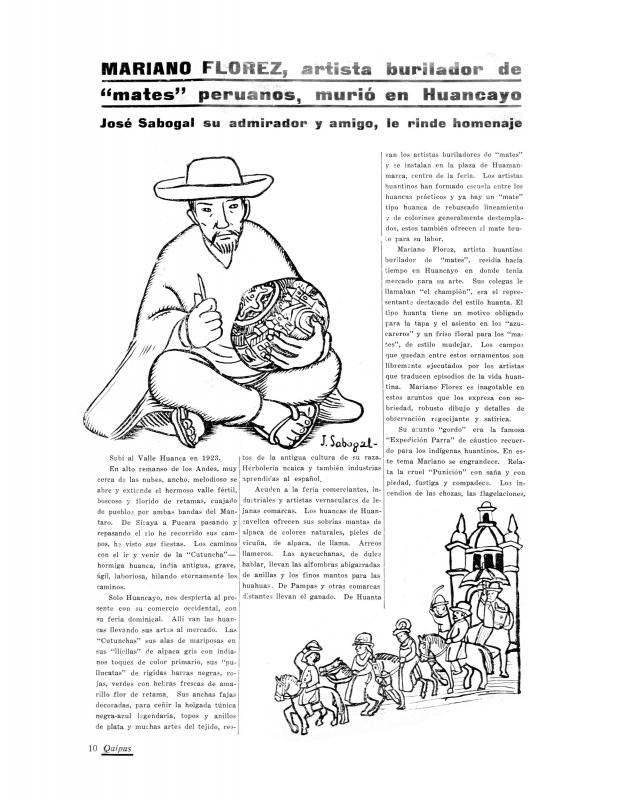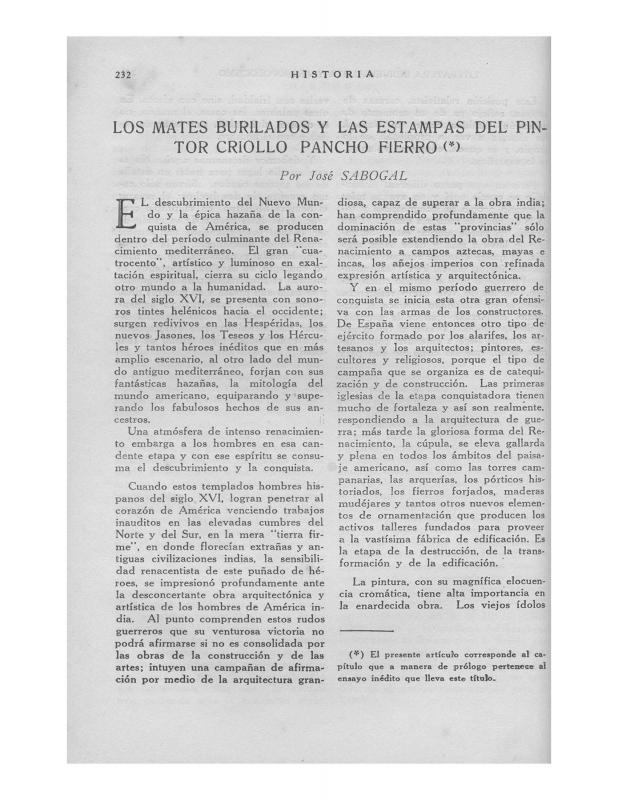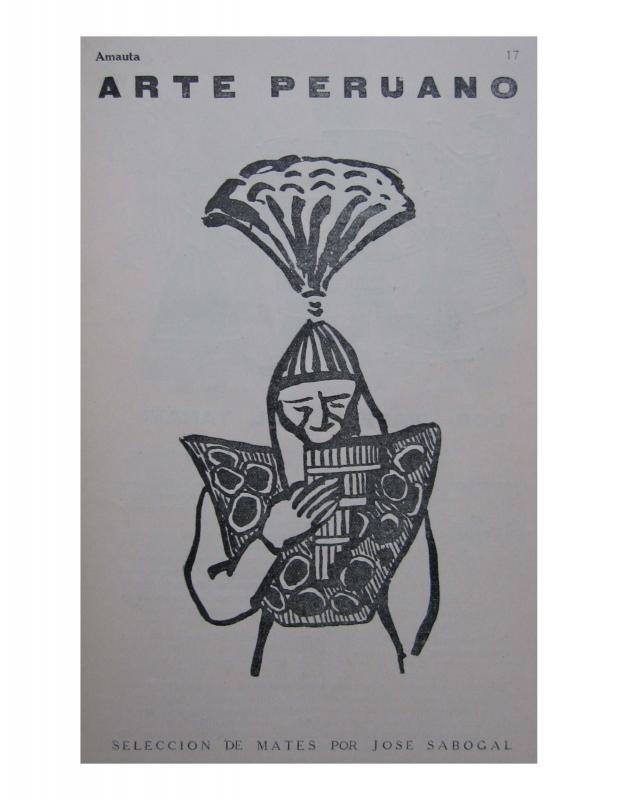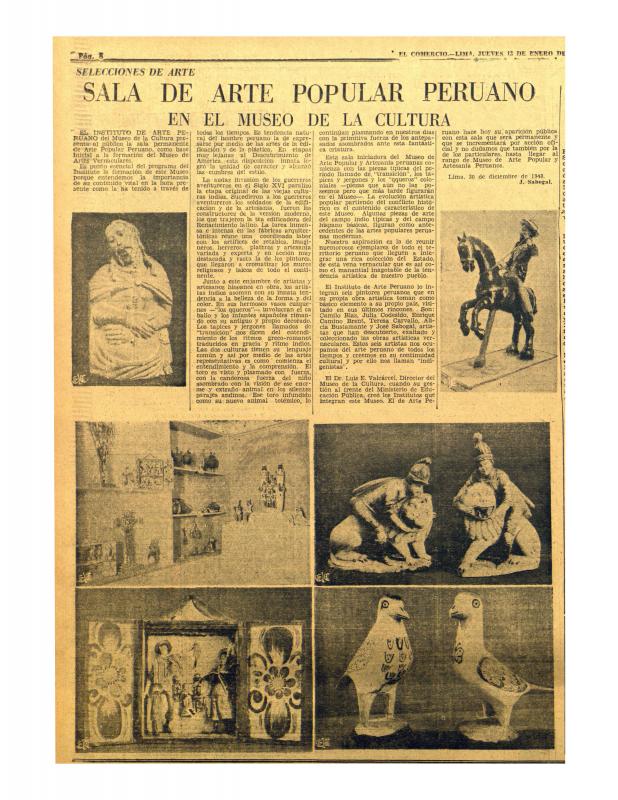This is the second of two articles [see the following in the ICAA digital archive: “Estados Unidos en impresión de José Sabogal (parte I)” (doc. no. 1140687)] that record Jorge Falcón interviewing Sabogal about his visit to the northern part of the American continent. Falcón was a Peruvian intellectual and communist who worked as a cultural journalist at several publications, such as La Noche (1934–45) and the newspapers Excelsior and El Universal (all of which were in Lima). He was a close friend of Sabogal, and published a number of articles and biographical essays about the painter and some of his followers. Falcón was married to Marina Núñez del Prado (1908–1995), a Bolivian sculptor. He founded and directed the Instituto Sabogal de Arte in 1986 in order to promote the research into and exposure of Peruvian art, especially the work of the Indigenists. Indigenist painting flourished in Peru from the 1920s to the 1940s as part of a broader movement that sought to redefine Peruvian identity in terms of indigenous elements. Although at some points it was entirely focused on the “indigenous” story and the glorious Inca that also championed a mestizo identity portrayed as a result of the integration of “native” and “Hispanic” cultures. The main ideologue and unchallenged leader of the Indigenist movement in the visual arts was José Sabogal (1888–1956), whose profound interpretation of the concept of “being rooted” was deeply influenced by regional art movements in Spain (exemplified by Ignacio Zuloaga [1870–1945], among others) and in Argentina (Jorge Bermúdez [1883–1926], to mention just one); Sabogal spent a great deal of time in these countries during his formative years. When he returned to Peru in late 1918, he settled in Cuzco where he produced about forty oil paintings of people and scenes of the city; these works were subsequently shown in Lima (1919) at an exhibition that is considered the formal beginning of Indigenist painting in Peru. Sabogal’s second solo exhibition at the Casino Español (1921), established his reputation. He joined the faculty at the new Escuela Nacional de Bellas Artes in 1920, where he was eventually appointed director (1932–43). There he trained a group of painters who joined the Indigenist movement: Julia Codesido, Alicia Bustamante (1905–1968), Teresa Carvallo (1895–1988), Enrique Camino Brent (1909–1960), and Camilo Blas (1903–1985). In the mid-1930s, a powerful movement emerged to oppose the Indigenist style—which was perceived as official and exclusive—and eventually, in 1943, Sabogal was dismissed from the Escuela Nacional de Bellas Artes. Supporters of Indigenism viewed this move as unjust, and rallied to the painter’s defense in letters, newspaper articles, and social events. In late 1942, Sabogal visited the United States and Mexico. He was invited to the United States by the State Department under the auspices of the Good Neighbor program that was created as a means of protecting the country’s borders during the Second World War. While he was there, Sabogal went to New York, Washington, San Francisco, and Los Angeles, where he met with artists and visited various cultural institutions. While in Mexico he did much the same thing, but also spent time studying fresco painting and printmaking. [There are many articles about this artist in the ICAA digital archive, including the following written by Sabogal: “Arquitectura peruana: la casona arequipeña (doc. no. 1173340); “La cúpula en América” (doc. no. 1125912); “Mariano Florez, artista burilador de "mates" peruanos, murió en Huancayo: José Sabogal su admirador y amigo, le rinde homenaje” (doc. no. 1136695); “Los mates burilados y las estampas del pintor criollo Pancho Fierro” (doc. no. 1173400); “Los 'mates' y el yaraví” (doc. no. 1126008); “La pintura mexicana moderna” (doc. no. 1051636); and “Sala de arte popular peruano en el Museo de la Cultura : selecciones de arte” (doc. no. 1173418)].

